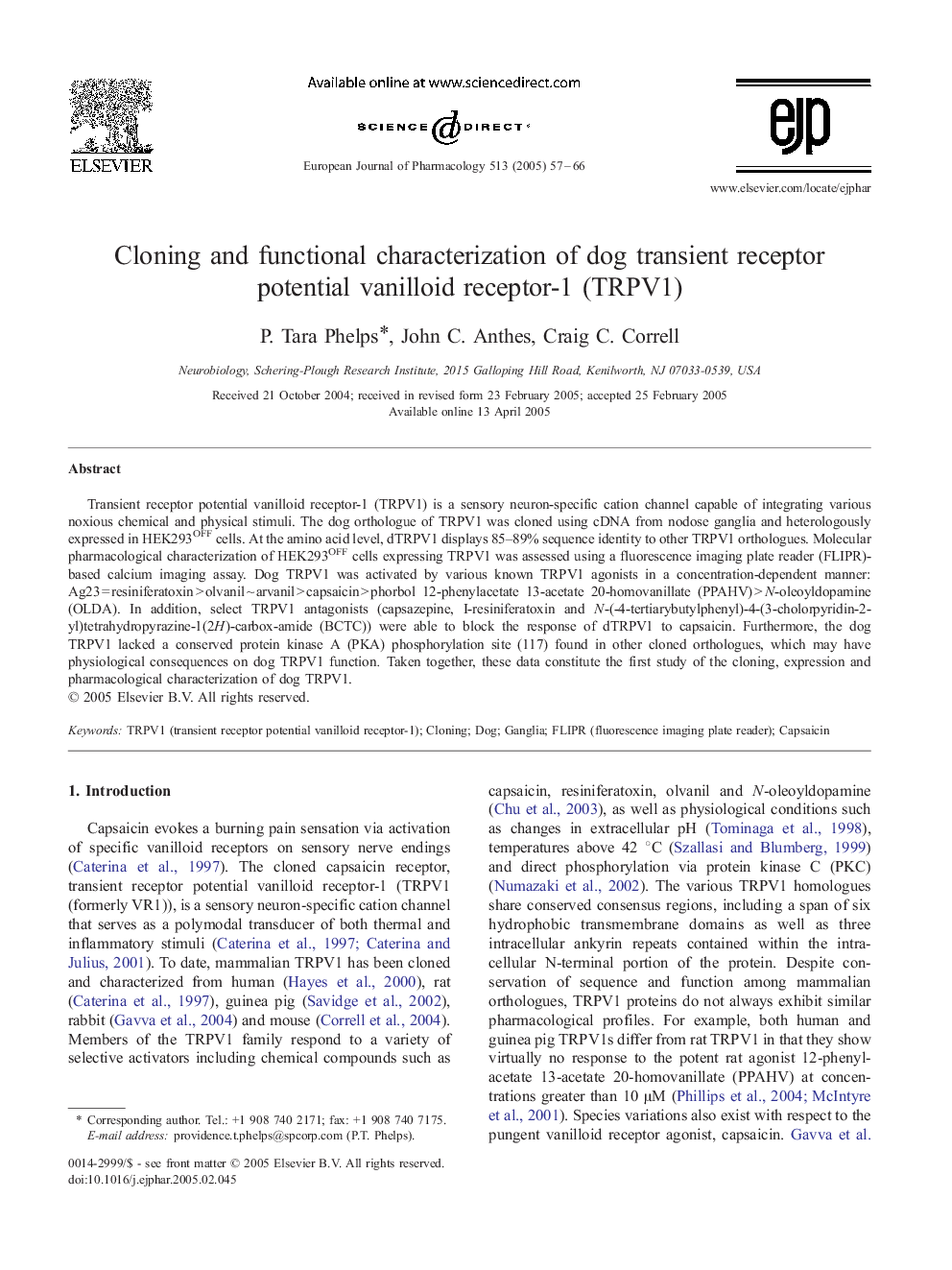| Article ID | Journal | Published Year | Pages | File Type |
|---|---|---|---|---|
| 9921367 | European Journal of Pharmacology | 2005 | 10 Pages |
Abstract
Transient receptor potential vanilloid receptor-1 (TRPV1) is a sensory neuron-specific cation channel capable of integrating various noxious chemical and physical stimuli. The dog orthologue of TRPV1 was cloned using cDNA from nodose ganglia and heterologously expressed in HEK293OFF cells. At the amino acid level, dTRPV1 displays 85-89% sequence identity to other TRPV1 orthologues. Molecular pharmacological characterization of HEK293OFF cells expressing TRPV1 was assessed using a fluorescence imaging plate reader (FLIPR)-based calcium imaging assay. Dog TRPV1 was activated by various known TRPV1 agonists in a concentration-dependent manner: Ag23 = resiniferatoxin > olvanil â¼Â arvanil > capsaicin > phorbol 12-phenylacetate 13-acetate 20-homovanillate (PPAHV) > N-oleoyldopamine (OLDA). In addition, select TRPV1 antagonists (capsazepine, I-resiniferatoxin and N-(-4-tertiarybutylphenyl)-4-(3-cholorpyridin-2-yl)tetrahydropyrazine-1(2H)-carbox-amide (BCTC)) were able to block the response of dTRPV1 to capsaicin. Furthermore, the dog TRPV1 lacked a conserved protein kinase A (PKA) phosphorylation site (117) found in other cloned orthologues, which may have physiological consequences on dog TRPV1 function. Taken together, these data constitute the first study of the cloning, expression and pharmacological characterization of dog TRPV1.
Related Topics
Life Sciences
Neuroscience
Cellular and Molecular Neuroscience
Authors
P. Tara Phelps, John C. Anthes, Craig C. Correll,
